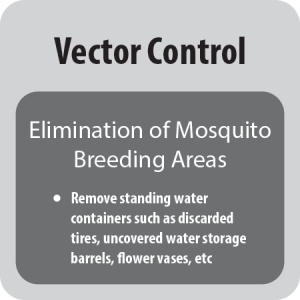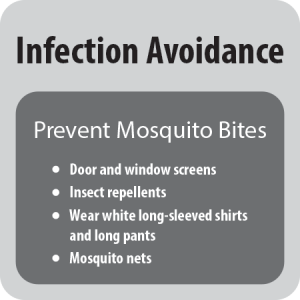Zika Virus - Information for the Transplant Professional
Zika virus (ZIKV) is a RNA virus of the Flaviviridae family, genus Flavivirus, which includes other well-known arboviruses such as West Nile virus (WNV), dengue virus (DENV) and yellow fever virus (YFV), the latter two also transmitted by Aedes mosquitoes.
Clarisse M. Machado, M.D.
Head, Virology Laboratory
Institute of Tropical Medicine
University of São Paulo, Brazil
TID President
More than half of the world’s human population lives in areas infested with Aedes; consequently, large urban epidemics of Zika, dengue, chikungunya, and even yellow fever have been expected for decades.
Although ZIKV was isolated from a rhesus monkey in the Zika forest of Uganda in 1947, the virus was largely ignored until 2007 when it caused an epidemic on the island of Yap in Micronesia and Gabon[1] followed by an outbreak in French Polynesia during 2013[2]. Deleterious consequences of these epidemics were not noticed in those countries, possibly due to the low population density. However, in early 2015, when ZIKV epidemics hit the northeast region of Brazil, a populous country infested by both Aedes aegypti and A. albopictus, the epidemic showed its true colors. The apparently mild acute infection was associated with serious consequences, such as the increase in the number of cases of Guillain-Barre (already seen after the French Polynesia epidemic) and microcephaly, in ZIKV epidemic regions.
Although not yet proven, a causal relationship between Zika infection during pregnancy and microcephaly is strongly suggested[3]. Meanwhile, reports of sexual and blood transmitted ZIKV infections have increased the controversy associated with the epidemic[4],[5].
So far, no cases of Zika virus have been reported in transplant recipients. Transmission by solid organ or marrow transplantation is theoretically possible since the virus can be transmitted through blood transfusion. It is not known if the disease is more or less severe in the immunocompromised patient. Therefore, it is important for the transplant community to be aware of the risk of ZIKV infections.
Infection with ZIKV is asymptomatic in most people. In symptomatic patients, fever, rash, conjunctivitis, or joint pain are the most common symptoms. Myalgia, asthenia and headache can also occur. The incubation period varies from a few days to a week, and symptoms typically resolve within a week. Severe disease and/or death appear to be very rare in the immunocompetent population. There is currently no vaccine and no treatment for Zika infection. Management of immunosuppressive drugs may be helpful to avoid severe symptoms and lymphopenia. However, the level of evidence for this recommendation is low.
Clinical presentation may help in the differential diagnosis in case of co-circulation of DENV and Chikungunya (CHKV). The main signs and symptoms observed in infections caused by ZIKV, DENV and CHKV are shown in the table below.
Signs and Symptoms |
Dengue |
Chikungunya |
Zika |
| Fever | ++++ | ++++ | + |
| Rash (maculopapular) | ++ | ++ | ++++ |
| Conjunctivitis | + | + | ++++ |
| Myalgia/arthralgia | +++ | +++++ | ++ |
| Edema | Absent | ++++ | +++ |
| Retro-orbital pain | +++++ | ++ | + |
| Lymphadenopathy | + | ++ | + |
| Bleeding | ++ | Absent | Absent |
| Hepatomegaly | ++ | +++ | Absent |
| Lymphopenia/ thrombocytopenia | +++ | +++ | Absent |
Preventive policies are focused on vector control and infection avoidance. Community-based programs are important to keep the environment free of potential breeding sources.


Based on current available information, the following recommendations should be shared with transplant patients:
-
Evaluation of epidemiological risk
Investigation of the epidemiological risk is mandatory and should focus especially upon travel to epidemic regions. Up until February 3rd 2016, 35 cases of travel-associated ZIKV diseases had been reported in the US[6]. -
Graft-transmission
Be aware that ZIKV infection results in an asymptomatic viremia in most people, consequently, donors travelling from epidemic regions might be infected. It is not known which organs might become infected with ZIKV or how long the infectious virus might be present in those organs.
In case of living donors with history of Zika infection, donation should be deferred whenever possible. For blood donation, the minimal deferral time recommended by the FDA is 28 days after returning from ZIKV regions.
Serological tests for Zika virus are not yet available, nor have they been validated for routine donor screening. The risk of donor-derived infection should be balanced with the benefits of transplantation on an individual basis.
At this moment, donor screening by PCR is not recommended in SOT, but should be considered in allogeneic HSCT in epidemic regions.
-
Diagnosis of ZIKV infection
For symptomatic patients, diagnosis entails real time PCR in blood or urine samples within the first 7 days or up to 14 days, respectively. Serology is not yet available.
To avoid unnecessary testing, a case definition approach to ZIKV investigation should be applied. For example, rash and/or fever, along with one of the following symptoms: headache, myalgia, arthralgia and conjunctivitis should prompt diagnostic investigation of suspected cases.
Health services should provide rapid and sensitive diagnosis, and include DENV and CHKV tests in regions with co-circulation of the three viruses.
-
Mosquito habits
The Aedes is a domestic mosquito, living in or around homes or other places frequented by people such as schools or churches. It generally bites at dawn and dusk. However, even in the hottest daytime hours, it can attack in the shade, inside or outside the home.
The mosquitoes breed in calm, clear water. In favorable environmental conditions, development into an adult mosquito takes around 10 days after emergence from the egg. Therefore, the elimination of standing water should be performed at least once a week to interrupt the mosquito life cycle.
-
Transplant candidates in waiting list
Avoid traveling to countries with ZIKV epidemics. Protective measures to avoid mosquito bites. Abstain from sexual activity or consistently and correctly use condoms during sex with a partner who has been to an area of Zika transmission. Pre-transplant screening by PCR is not recommended at this moment. -
Transplant recipients
Asymptomatic:
Avoid traveling to countries with ZIKV epidemics; protective measures to avoid mosquito bites. Abstain from sexual activity or consistently and correctly use condoms during sex with a partner who has been to an area of Zika transmission.Symptomatic:
Test for ZIKV (PCR) and exclude other relevant infections, such as CMV. Consider discontinuation of cell cycle agents (azathioprine or mycophenolate).
[1]. Grard G, Caron M, Mombo IM, Nkoghe D, Mboui Ondo S, Jiolle D, et al. Zika Virus in Gabon (Central Africa) - 2007: A New Threat from Aedes albopictus? PLoS Negl Trop Dis. 2014;8(2)
[2]. Ioos S, Mallet HP, Leparc Goffart I, Gauthier V, Cardoso T, Herida M. Current Zika virus epidemiology and recent epidemics. Med Mal Infect. Elsevier Masson SAS; 2014;44(7):302–7.
[3]. Schuler-Faccini L, Ribeiro EM, Feitosa IML, Horovitz DDG, Cavalcanti DP, Pessoa A, et al. Possible Association Between Zika Virus Infection and Microcephaly — Brazil, 2015. MMWR Morb Mortal Wkly Rep. 2016;65(3):59–62.
[4]. Musso D, Roche C, Robin E, Nhan T, Teissier A, Cao-Lormeau VM. Potential sexual transmission of zika virus. Emerg Infect Dis. 2015;21(2):359–61.
[5]. Reuters. Zika Spread Through Blood Transfusion in Brazil [Internet]. 2016. Available from: http://time.com/4208187/brazil-zika-blood-transfusion
[6]. Centers for Disease Control and Prevention (CDC). Zika virus [Internet]. 2016. Available from: http://www.cdc.gov/zika/index.html
Social
Contact
Address
International Intestinal Rehabilitation & Transplant Association
c/o The Transplantation Society
740 Notre-Dame Ouest
Suite 1245
Montréal, QC, H3C 3X6
Canada


